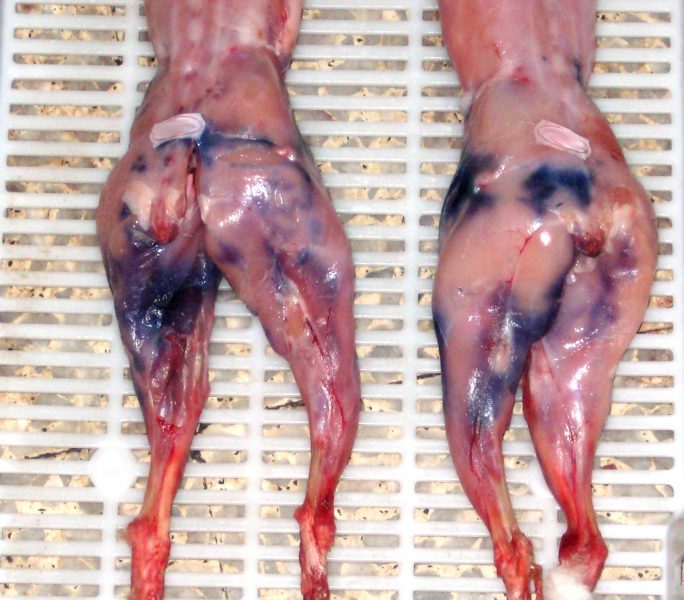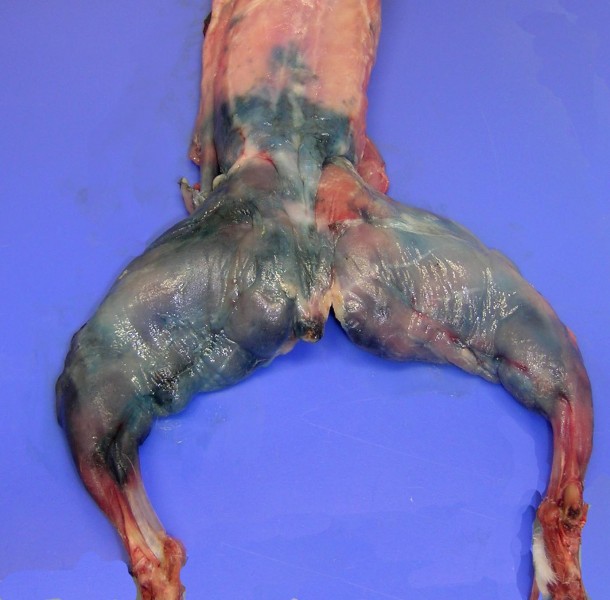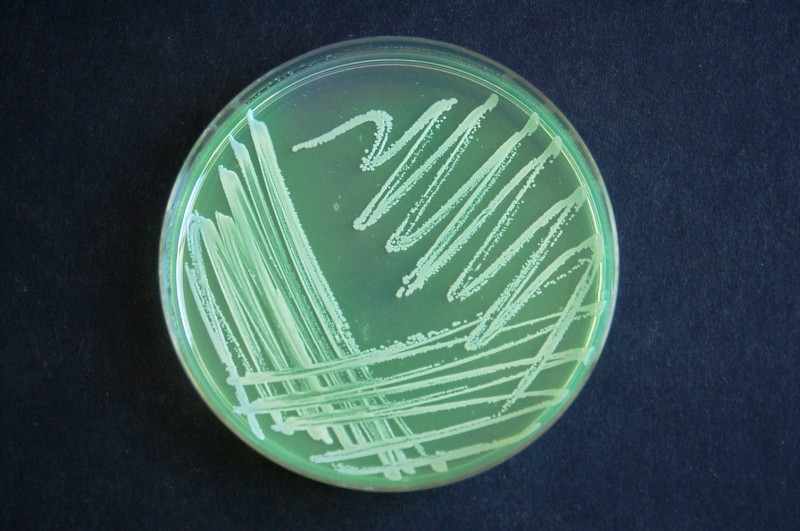The Curious Case of the Blue Rabbit
A rabbit carcass was submitted, which had been returned to the slaughterhouse, because of the presence of bluish spots in muscles which seemed to grow as time passed, starting to affect the fat and kidneys.
When sectioning the muscle the pigmentation delved into the muscular tissue. No anomalies were detcted upon antemortem examination.
Histopathological examination revealed the presence of bacteria (gram positive and gram negative) accumulated in the carcass surface but not penetrating the muscular fibres. No inflammatory reaction was observed, confirming that it was a postmortem change.
In an initial microbiological culture Aeromonas hydrophila / caviae and Staphylococcus sciuri were isolated. A new microbiological analysis finally allowed the isolation of Pseudomonas fluorescens.
The book "Food Microbiology" WC Frazier, DC Westhoff, Acribia Ed (1993), describes such colors on the surface of the meat as produced by bacterial growth (such as that of P.fluorescens) which produce a yellow pigment that, upon combineation with lipid peroxidation of meat and fat can generate a bluish pigment, known as "stamp ink". We are thus faced with a case of bacterial contamination of the carcass, most likely accompanied by an disruption of the refrigeration continuum.




